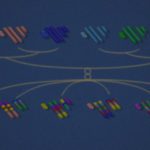Link to Pubmed [PMID] – 10869291
Hepatology 2000 Jul; 32(1): 73-81
Erythropoietic protoporphyria (EPP) is characterized clinically by cutaneous photosensitivity and biochemically by the accumulation of excessive amounts of protoporphyrin in erythrocytes, plasma, feces, and other tissues, such as the liver. The condition is inherited as an autosomal dominant or recessive trait, with a deficiency of ferrochelatase activity. A major concern in EPP patients is the development of cholestasis with accumulation of protoporphyrin in hepatobiliary structures and progressive cellular damage, which can rapidly lead to fatal hepatic failure. The availability of a mouse model for the disease, the Fech(m1Pas)/Fech(m1Pas) mutant mouse, allowed us to test a cellular therapy protocol to correct the porphyric phenotype. When Fech/Fech mice received bone marrow cells from normal animals, the accumulation of protoporphyrin in red blood cells and plasma was reduced 10-fold but still remained 2.5 times above normal levels. Interestingly, in very young animals, bone marrow transplantation can prevent hepatobiliary complications as well as hepatocyte alterations and partially reverse protoporphyrin accumulation in the liver. Bone marrow transplantation may be an option for EPP patients who are at risk of developing hepatic complications.

